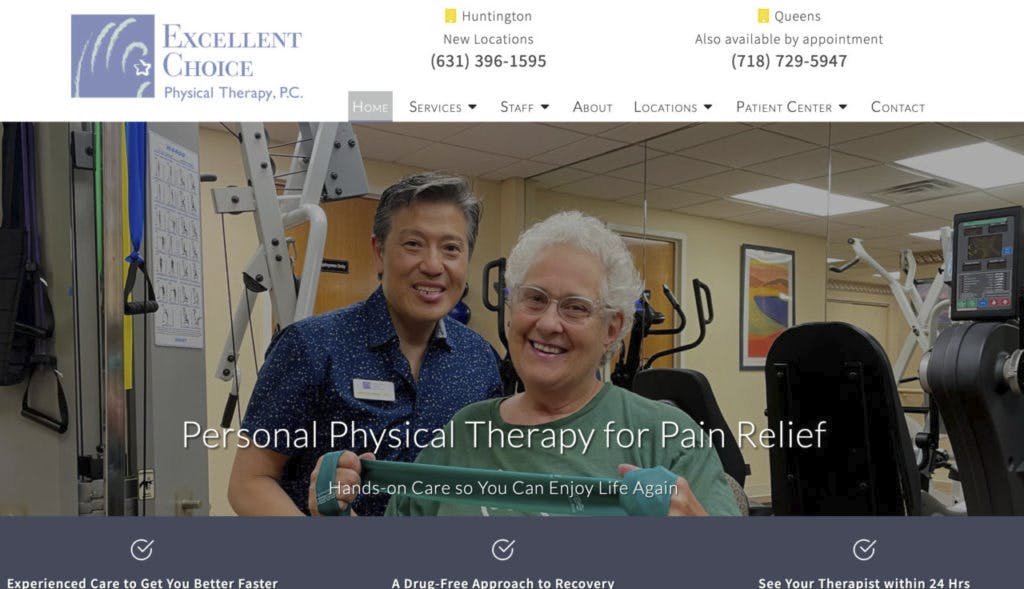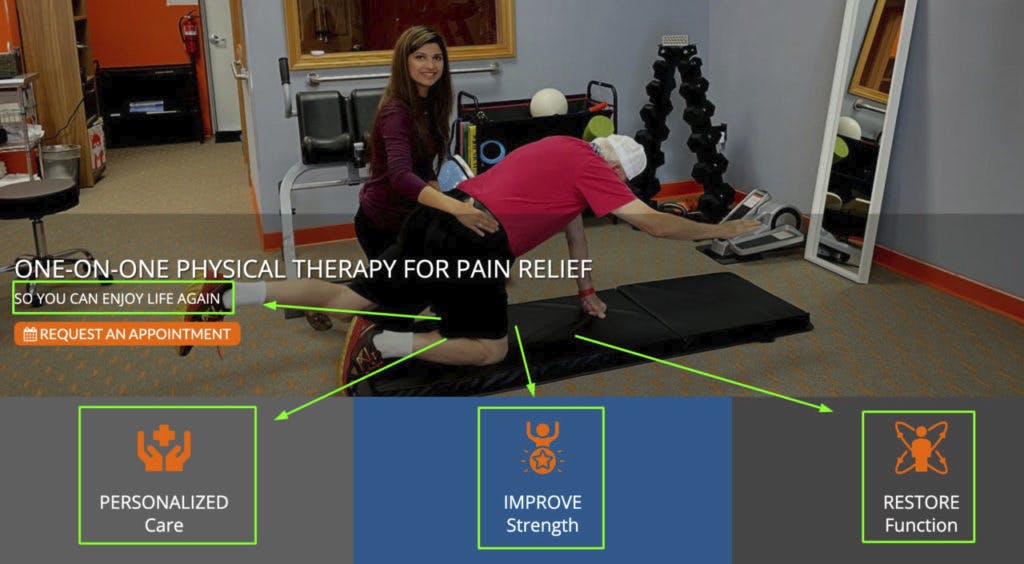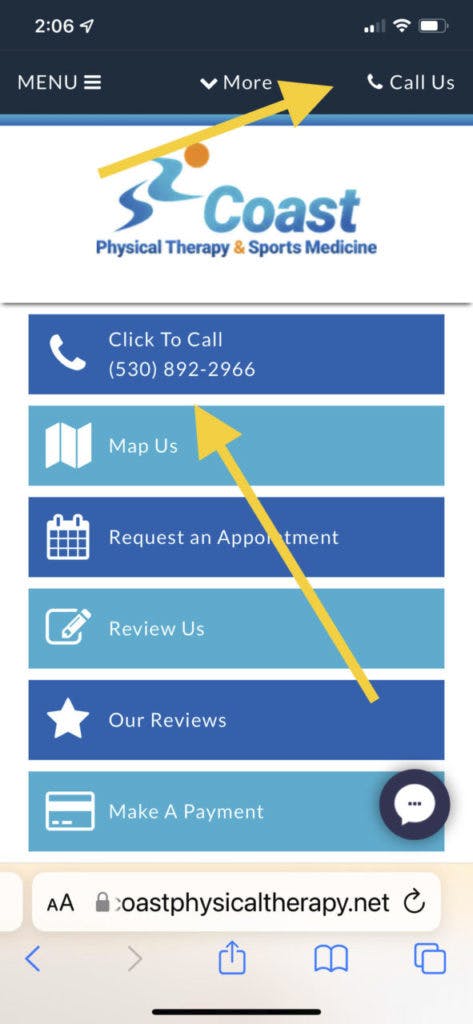Complexity Results In Confusion, And Confusion Means You Get Nothing Done – Start With This For A Quick Win
Navigating the complex world of digital marketing can be confusing. For a practice owner, there are constant distractions, this company promising 30 new patients, that company promising double digit growth etc. For a small practice owner, the key is leveraging your money to buy the time of other niche experts. One example of this is physical therapy website design and development – one of the core services here at E-rehab.com .
Understanding your market’s fundamentals, like how they use the web to find you and become a new patient, and implementing the right strategies can significantly amplify your success and save precious time.
PT practices on average get about 150 visitors to their website every month. Converting more of those viewers to patients (i.e. conversion rate optimization), is an easy way to generate more new business without breaking the bank.
Focus On Your Home Page To Increase Conversions
In the past, I’ve talked about Donald Miller’s copywriting strategy that he discusses in Marketing Made Simple. In this post, I’m going to delve into a slightly different way for practice owners to think about how they can write good copy for their home page…the most commonly visited page on your website (and therefore, the most important).
The Important Sections Of The Physical Therapy Website Home Page From Top To Bottom
1. The Hero Section: Your Digital Handshake
Your website’s hero section is the virtual equivalent of a firm, warm handshake. It’s the initial interaction a potential patient has with your physical therapy website, and it sets the tone for their entire experience. Ensure this section succinctly communicates who you are, what unique benefits you offer, and how potential patients can engage with your services. A compelling headline about what you offer, a subheadline about the main benefits of your services, and a clear call-to-action (CTA) are not just elements; they are your first conversation with a potential patient.
2. The Problem Section: Addressing Pain Points
Understanding and articulating your clients’ challenges resonate more than listing services. Your website should empathize with the common issues your patients face, be it chronic back pain or post-surgical rehabilitation needs. This section is about connecting at an emotional level, showing that you not only understand their struggles but also have the expertise to alleviate them.
3. The Solution Section: Showcase Your Expertise
After highlighting the problems, it’s time to present your services as the antidote. Detail how your approach to physical therapy can transform your patients’ lives. Be specific about the benefits of choosing your practice. This could be your innovative treatment techniques, your personalized care plans, or your supportive, experienced staff.
4. The Journey: Guiding Through the Process
Like a treasure map, your website should guide potential patients through their care journey. Outline the steps from the initial evaluation to the completion of their treatment plan. This not only demystifies the process but also builds trust. Transparency in your service delivery process reassures potential patients that they are in capable hands.
5. Social Proof: The Power of Testimonials
Leverage the power of social proof. Share success stories, testimonials, and case studies. Let your satisfied patients speak for you. Seeing real-life examples of how your services have improved others’ lives can be a powerful motivator for potential patients to choose your practice over others.
6. The Call to Action: Nudging Towards the Next Step
Every section of your website should have a purpose, driving visitors towards a decision. A well-placed CTA can make the difference between a visitor and a patient. Whether it’s scheduling a consultation or simply making a phone call, make sure your CTAs are clear, compelling, and lead to a straightforward next step.
7. Let Them Know How They Can Pay For Your Services
Let’s face it, health care is expensive. Your website should communicate how patients are expected to pay for services. Do you take insurance? Are you in-network? Are you a cash-based practice? Let patients know how they will pay for your services and it will bring them one step closer to becoming a new patient. Note, make sure not to include too much information. You don’t want to dissuade a viewer from calling. Detailed money discussions are best done over the phone.
Crafting the copy for your physical therapy private practice website is more than just listing your services. It’s about creating a journey for your potential clients, one that acknowledges their pains, presents solutions, and guides them towards a healthier future.
By integrating this approach, you can create a website that not only stands out but also effectively converts visitors into patients Remember, in the digital world, your website is your storefront, your receptionist, and your best salesperson all rolled into one. Make every pixel count!









